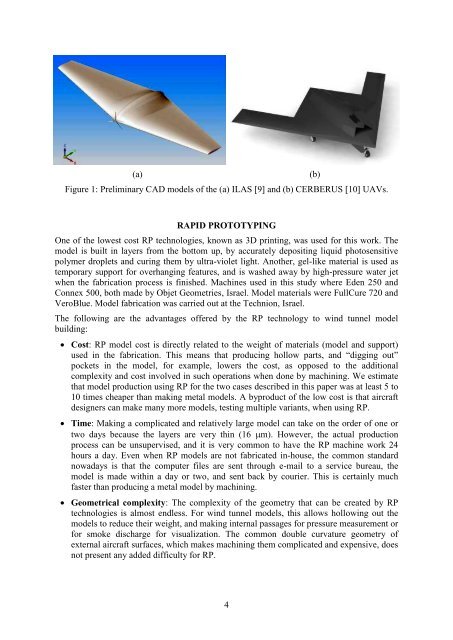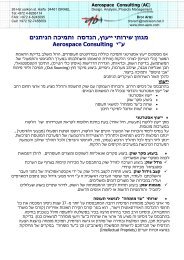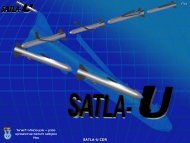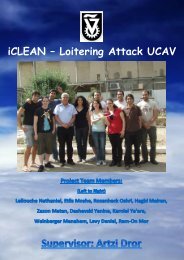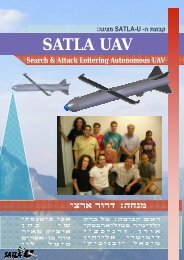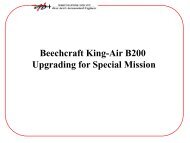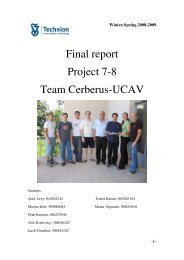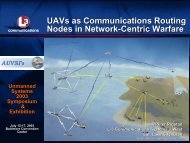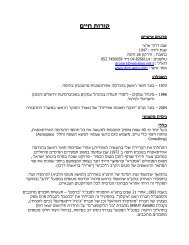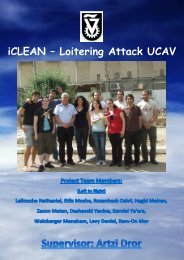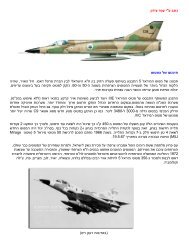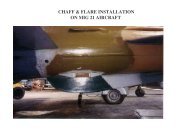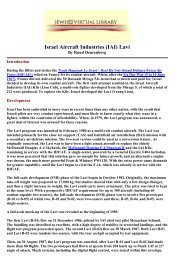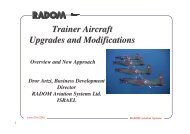wind tunnel paper.pdf - aero.com
wind tunnel paper.pdf - aero.com
wind tunnel paper.pdf - aero.com
Create successful ePaper yourself
Turn your PDF publications into a flip-book with our unique Google optimized e-Paper software.
(a)<br />
Figure 1: Preliminary CAD models of the (a) ILAS [9] and (b) CERBERUS [10] UAVs.<br />
(b)<br />
RAPID PROTOTYPING<br />
One of the lowest cost RP technologies, known as 3D printing, was used for this work. The<br />
model is built in layers from the bottom up, by accurately depositing liquid photosensitive<br />
polymer droplets and curing them by ultra-violet light. Another, gel-like material is used as<br />
temporary support for overhanging features, and is washed away by high-pressure water jet<br />
when the fabrication process is finished. Machines used in this study where Eden 250 and<br />
Connex 500, both made by Objet Geometries, Israel. Model materials were FullCure 720 and<br />
VeroBlue. Model fabrication was carried out at the Technion, Israel.<br />
The following are the advantages offered by the RP technology to <strong>wind</strong> <strong>tunnel</strong> model<br />
building:<br />
Cost: RP model cost is directly related to the weight of materials (model and support)<br />
used in the fabrication. This means that producing hollow parts, and ―digging out‖<br />
pockets in the model, for example, lowers the cost, as opposed to the additional<br />
<strong>com</strong>plexity and cost involved in such operations when done by machining. We estimate<br />
that model production using RP for the two cases described in this <strong>paper</strong> was at least 5 to<br />
10 times cheaper than making metal models. A byproduct of the low cost is that aircraft<br />
designers can make many more models, testing multiple variants, when using RP.<br />
Time: Making a <strong>com</strong>plicated and relatively large model can take on the order of one or<br />
two days because the layers are very thin (16 m). However, the actual production<br />
process can be unsupervised, and it is very <strong>com</strong>mon to have the RP machine work 24<br />
hours a day. Even when RP models are not fabricated in-house, the <strong>com</strong>mon standard<br />
nowadays is that the <strong>com</strong>puter files are sent through e-mail to a service bureau, the<br />
model is made within a day or two, and sent back by courier. This is certainly much<br />
faster than producing a metal model by machining.<br />
Geometrical <strong>com</strong>plexity: The <strong>com</strong>plexity of the geometry that can be created by RP<br />
technologies is almost endless. For <strong>wind</strong> <strong>tunnel</strong> models, this allows hollowing out the<br />
models to reduce their weight, and making internal passages for pressure measurement or<br />
for smoke discharge for visualization. The <strong>com</strong>mon double curvature geometry of<br />
external aircraft surfaces, which makes machining them <strong>com</strong>plicated and expensive, does<br />
not present any added difficulty for RP.<br />
4


